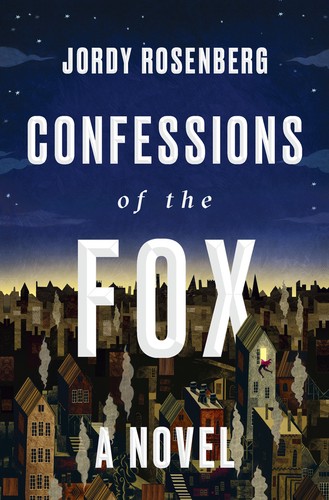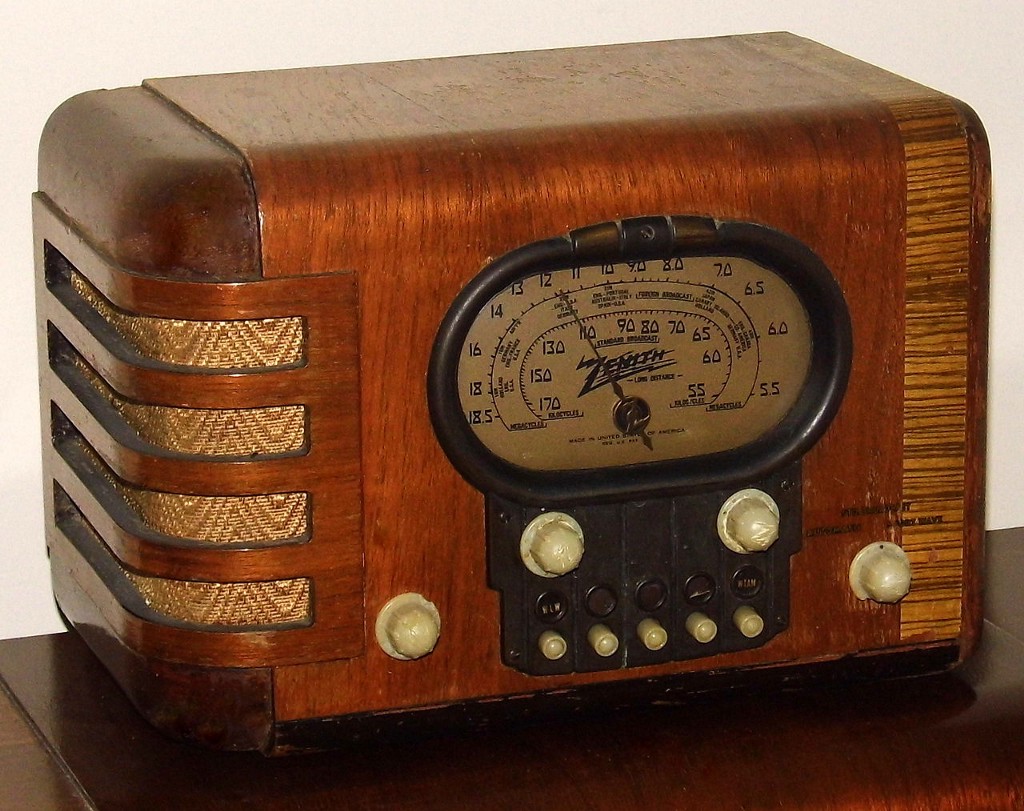interviews
Jordy Rosenberg on Writing a Queer 18th-Century Love Story
‘Confessions of the Fox’ is one of the first works of fiction by an trans author released by a major publisher

Correction: The subtitle of this piece originally said that Confessions of the Fox was “the first” work of fiction by an trans author released by a major publisher. It is among the first, and an occasion worth celebrating.
A n interview is a great occasion for a first encounter. Or better said: it makes perfect sense Jordy Rosenberg and I got his chance to talk, given our (unknown until now) shared interest in the potent + portent possibilities of the body. Add to it overlapping mentors, a love of language’s frilly surfaces and deep caverns, and a similar feeling about writing amidst history’s many conflicting archives — ie, writing amidst, but not in requiem to. As Rosenberg says: “I wasn’t aiming for historical verisimilitude. Actually I was aiming for something explicitly anachronistic.” Jordy Rosenberg likes to keep things alive.

Confessions of the Fox is bold for all of the reasons you already know — its headfirst thrust into the past while also refusing to let go of the present (replete with its office park academia and the possibility of an interdimensional future), its explicit and decentering current of sex running nonstop throughout, and its moments of meaty theory.
But what I love best about Confessions of the Fox is its mammoth feeling. It takes a big cauldron of hope to make a book like this, and we need cauldrons of hope right now and always.

Jess Arndt: While reading, I couldn’t stop thinking about what seems like the very queer pleasure of using the footnote as a place to scrawl something else. For instance, the margins of Confessions are littered with penises (like on page 97 as a translation for “sugar stick”) but often resist offering translations for 18th C vocab the average reader might not know. It made me laugh in recognition, as if you were drawing dicks (or less clearly defined genitalia) over everything with your other hand. (Also pg. 10 “Pussy. Pussy. Pussy. Pussy. Pussy. Pussy.”) Is this meant only as a window into our editor (Dr. Voth’s) character, or is there something larger going on — some kind of disruption/refusal at the formal level?
Jordy Rosenberg: This is such a great question. I love this description of the footnotes as queer annotation/scrawling in the margins, and yes, in part I was aiming to mess with the sanctity of some very conservative notions about genitals. I enjoyed piling the many, many different 18th-century slang terms for genitalia into a chaotic accumulation of erotogenic zones as way of creating a genital nonsense that is also a kind of libidinal obsession. I wanted to produce a torrent of language around genitalia as a way of both mocking cis-het conventions around the knowability of desire and its supposed suturing to certain body parts, and also as a nod to the ways in which queers and trans and other gender non-conforming people have these very powerful and deep traditions of resignifying words and our bodies in relation to each other. So, “pussy” or “cock,” as we know, really can and does mean anything between two (or however many) people in certain erotic exchanges. And indeed, at one point the editor-character comes to realize that “pussy” must mean “any loved point of entry” on the body for the characters in the book. This lived experience of genital resignification is something I wanted to be able to not only write “about” at the level of content, but — to get back to your question — also have shape the structure of the novel. My hope for the footnotes was that they would create the experience for the reader of this playful deluge of language, this kind of fanatical, infatuated resignification of body parts.
The solicitation of the reader’s desire through the footnotes is one of the ways in which I was trying to think about the metafictional structure itself. I wanted to create them as a structure that would function as a cathexis for the reader and couldn’t simply be understood as a kind of postmodern cliché about the constitutive slipperiness of language, etc.. As your question articulates so aptly, aesthetic form (I don’t just mean language; I mean form) is itself a form of desire.
JA: Gender is central to the organization of the book, but also more tactilely, so is flesh. There’s a stretchiness to the bodies in Confessions, especially Jack’s, echoed by the “sexual chimera” diagram on page 132. We’re consistently reminded of your characters’ all-too-familiar (to our contemporary moment’s) physical precarity, and yet, regularly they perform feats that push against what we might imagine is achievable or ”real.” This seems intentional. Can you talk about how you write a body that doesn’t (historically/geographically/corporeally/or in any other way you might have run up against) exist?
JR: There’s a scene in Confessions where Jack first sees Bess and she kind of cat calls him on the street; she calls him a “boy,” and no one’s recognized him quite that way before, because he’s been assigned female at birth. To some people that queer recognition might seem like a fantastical positing of maleness. But to me (and I’m not in any way alone in this) that kind of thing — being recognized by a love interest in a certain way — feels “real.”
What a Cross-Dressing Lady Knight Taught Me About Gender and Sexuality
JA: What felt riskiest to you while writing? What was hardest?
JR: I feel like the expected answer here might have something to do with writing sex scenes, being explicit, some of the dirtiness of the novel, etc.. But honestly that stuff was either a pleasure or compulsive or both. I think the hardest and riskiest thing, actually, had to do with navigating my anxieties around trying to be “right” in terms of an academic or political style of argument. Learning how to subordinate (the fantasy of) the authority of my own scholarly “voice” to the demands/pleasures of fictive structure was probably what was hardest. To let — or to try to let — myself disappear into the aesthetic form was a process that was very unlike academic writing for me.
JA: I’m drawn to the voraciousness of your approach. It’s a bodice ripper and a material exploration of post/decolonial/trans theory at the same time. It’s also making a bid for D.I.Y. assemblage. There’s something very vulnerable and I think, vital, about making something by hoping, (for eg., “silt shadowed his cheeks with the false outline of a beard” (99). Another way to put it is against all odds, insisting it is so. Because of the dearth of trans lit., did you feel pressure to account for everything/make everything possible?
JR: I love that you describe it as a bodice ripper combined with some theory. I just love that. In fact, I was going for a little bit of de Sade, Philosophy in the Bedroom.
And yeah I did feel some pressure around the mainstream publishing issue. Actually, our mutual friend/mentor Christina Crosby once joked that there was some pressure on me to write Transing the Velvet. And I did feel that a bit — though not coming from my editors or anything, more just some ambient sense of expectations for a mainstream publication. But then I just took a deep dive into just being like: well I have to be as weird and kind of perverted and obsessive as I actually am. And just went with it.
Queers and trans and other gender non-conforming people have these very powerful and deep traditions of resignifying words and our bodies in relation to each other. “Pussy” or “cock” can and does mean anything between two (or however many) people in certain erotic exchanges.
JA: Late in the book, Dr. Voth introduces (via footnote) “a central tenet of decolonial theories of the archive — its critique of our fetish for archival truths” (259). As someone who has also attempted to explore trans narratives by suturing them into a different historical moment (it’s hard!), I’m fascinated by what seem like your joint impulses to uncover a root trans subjectivity (including surgeries and hormones), and also to problematize the urge to do so. Is there something essential about 1700’s London? What led you to (the historical) Jack Sheppard?
JR: So Jack Sheppard was a real historical person who lived in London from 1702 until his execution in 1724. He was sold by his mother at an early age to a children’s workhouse, and from there sent into a servitude/apprenticeship with a carpenter. He eventually broke the bonds of that servitude and became a legendary thief and prison-break artist. He was a massively popular folk hero in the period. Along with John Gay’s Beggar’s Opera, there was a large amount of minor work produced in the early 18th century around the figure of Jack Sheppard: multiple hack memoirs and autobiographies, fake letters written by “Sheppard” from the afterlife following his execution, many broadside accounts of his goings on, etc. He was really beloved, in part because he made a mockery of private property — commodities and prisons alike. And one of the things I’d noticed about representations of Sheppard was that he was frequently described in ways we might see now as genderqueer or gender nonconforming — effeminate, very “pretty,” and lithe. Moreover, this gender nonconformity was also represented as not only legendarily sexy but key to Jack’s ability to escape confinement, due to smallness of frame, flexibility, and so on.
So Sheppard, as this beautiful deviant figure, functioned as a way for people to libidinally invest in imaginaries of embodied, spatialized forms of resistance to the intensifying police and prison system in the period. Once I started reading about him, it was pretty hard not to want to write a new twist on his story. And I really liked that there were so many Sheppard narratives circulating. I don’t have any attachment to the fantasy of “original” plotlines. I like the idea of riffing on a beloved trope.
About what you say regarding “exploring trans narratives by suturing them into a different historical moment” — yeah, it is hard, but that’s the point, right? It’s basically an experiment in defamiliarization that’s trying to cast some things about the present into more startling focus — in this case, to do with the constellation of carceral capitalism, gender and sexuality, and the imperial, racist state. These things still compose an assemblage today, and the question I was interested in was: what happens if we create a deliberately, extravagantly fictive fiction about this assemblage that is partially based in the historical origins of these institutions, and also partially, intentionally highly speculative? I wasn’t aiming for historical verisimilitude. Actually I was aiming for something explicitly anachronistic. The footnotes were another way of getting at that: I wanted the footnote narrative that takes place in some alternate present and the narrative of the body text from 1724 to diegetically converge in a way that was strictly speaking “impossible,” but was happening anyway. The footnotes, in that sense, are not only or not so much this fully postmodern convention about textual self-reflexivity; they are equally as much drawn from the conventions of sci-fi and fantasy fiction, specifically the convention of the portal through which characters enter another world, distant in either time or space or both. So, the footnotes offer this spatio-temporal compression and a medium for a hopefully cathectable defamiliarization of what we think we are looking for when we are looking for trans origin narratives.
So the point — I think this is what you’re getting at in your question — was that it’s not really possible or desirable to uncover some “root trans subjectivity” that exists in a vacuum, because trans subjectivity has never existed and still does not exist in isolation from these other historical factors and forces.
An 18th-Century Erotic Novel Taught Me All the Wrong Lessons About Desire
JA: In many ways, Jack and Dr. Voth have similar blind spots, especially with regard to the female operators in their lives. When writing trans narratives, how do you navigate without reinscribing patriarchal roles?
JR: Yes, so much of this book is an effort to recognize some of the femme labor that goes into the forms of masculinization I mentioned above. Mostly what I was thinking about, actually, was not masculinity in a vacuum, but the coming-into-being of certain forms of white masculinity in the British 18th century. Something I was interested in in this period, were the early moments of that particularly pernicious modern Western schema of the racialization and hierarchization of humanity by skin color, and the articulation of white masculinity as a new phenomenon, and one which was and is in so many ways a constitutively clueless and violent form of subjectivity. It didn’t feel possible to me to depict Jack’s articulation of maleness — even trans maleness — outside of how maleness intersected then and now with whiteness. So despite his marginalization, he’s also accessing forms of privilege. We know all this. In any case, these contradictions continue to be at play in the present, and so I also wanted to get at some of those problematics with Voth as well.
I wanted to produce a torrent of language around genitalia as a way of both mocking cis-het conventions around the knowability of desire and its supposed suturing to certain body parts.
JA: There’s a lot of pathos here, as we grapple with a burgeoning prison system, plague/disease/fear utilized as a political tool against disenfranchised bodies, racism as urban architecture, murderous violence. There are also many cracks of light. What’s the place of utopia as an organizing principle? I’m thinking of its itchy Greek translation between: “no place/good place” and of course of queer utopias — of Jose Munoz’s “not yet here.” Do you believe in the possibility of positive outcomes?
JR: Well this is an amazing question. I love Jose’s work on utopia, and have had a long and intense relationship to it that only seems to deepen with time. Cruising Utopia is a masterpiece of erudition and innovation, and it is truly awful that Jose is not still here to keep theorizing our present and our not-yets. Without attempting to fully redact the entire argument, I think it’s worth quoting one of the passages from Cruising Utopia that I’ve been thinking about for a long time. In homage to the complexity of this work I will say that I have struggled to understand this passage in particular for quite a while:
“To see queerness as horizon is to perceive it as a modality of ecstatic time in which the temporal stranglehold that I describe as straight time is interrupted or stepped out of. Ecstatic time is signaled at the moment one feels ecstasy, announced perhaps in a scream or grunt of pleasure, and more importantly during moments of contemplation when one looks back at a scene from one’s past, present, or future. Opening oneself up to such a perception of queerness as manifestation in and of ecstatic time offers queers much more than the meager offerings of pragmatic gay and lesbian politics.”
There’s so much to discuss here — the relationship between contemplation and ecstasy; the idea of looking “back” on a scene that hasn’t happened yet, etc.. But it has been this “scream or grunt of pleasure” that’s most preoccupied and confused me over the years. What is being argued here? How does this particular expression of pleasure index a not-yet here queerness? What does this even mean?
What I’ve come to recently is the realization that it isn’t the grunt in itself, but the grunt’s relation to contemplation that contains the force of the claim here. Part of what Munoz was doing was extending and torquing a Marxist tradition of thought around sensation, perception, and theorization. I’ll give an example of this. In Archaeologies of the Future, Fredric Jameson has this interesting argument about how utopian bodies figure in science fiction. Jameson describes these bodies as non-allegorical — bodies in which “the senses swap places” — so that one sense perception expresses another. It’s like a revolutionary synesthesia: instead of trying to express a perception through the allegorical or figural medium of language, one sense perception is instead expressed through another sense perception. Collapsing the space of language into the immediacy of the body — that’s a kind of invocation of utopia.
So, in the thing about the grunt, Munoz is kind of complicating a Jamesonian-esque approach to utopia and bodies. The Munozian grunt is this non-allegorical, non-mimetic metabolization of a perception of time (“look[ing] back at a scene from one’s past, present, or future”) that we would ordinarily understand as a purely contemplative experience that should be expressed through language and figuration. But instead of linguistic extrapolation, the grunt is the mediation of this experience of temporality, memory, projection, etc. I think what Munoz is doing is showing that there is no way to theorize utopia (and especially utopian embodiment) without also attending to the particulars of queerness and sexuality. Jameson delivers us this very unmarked normative utopian body. And Munoz takes it and dirties it up with all the particulars of history, power, and the social world.
I realize I didn’t answer your question about “positive outcomes.” If I could have just grunted, I would have.










